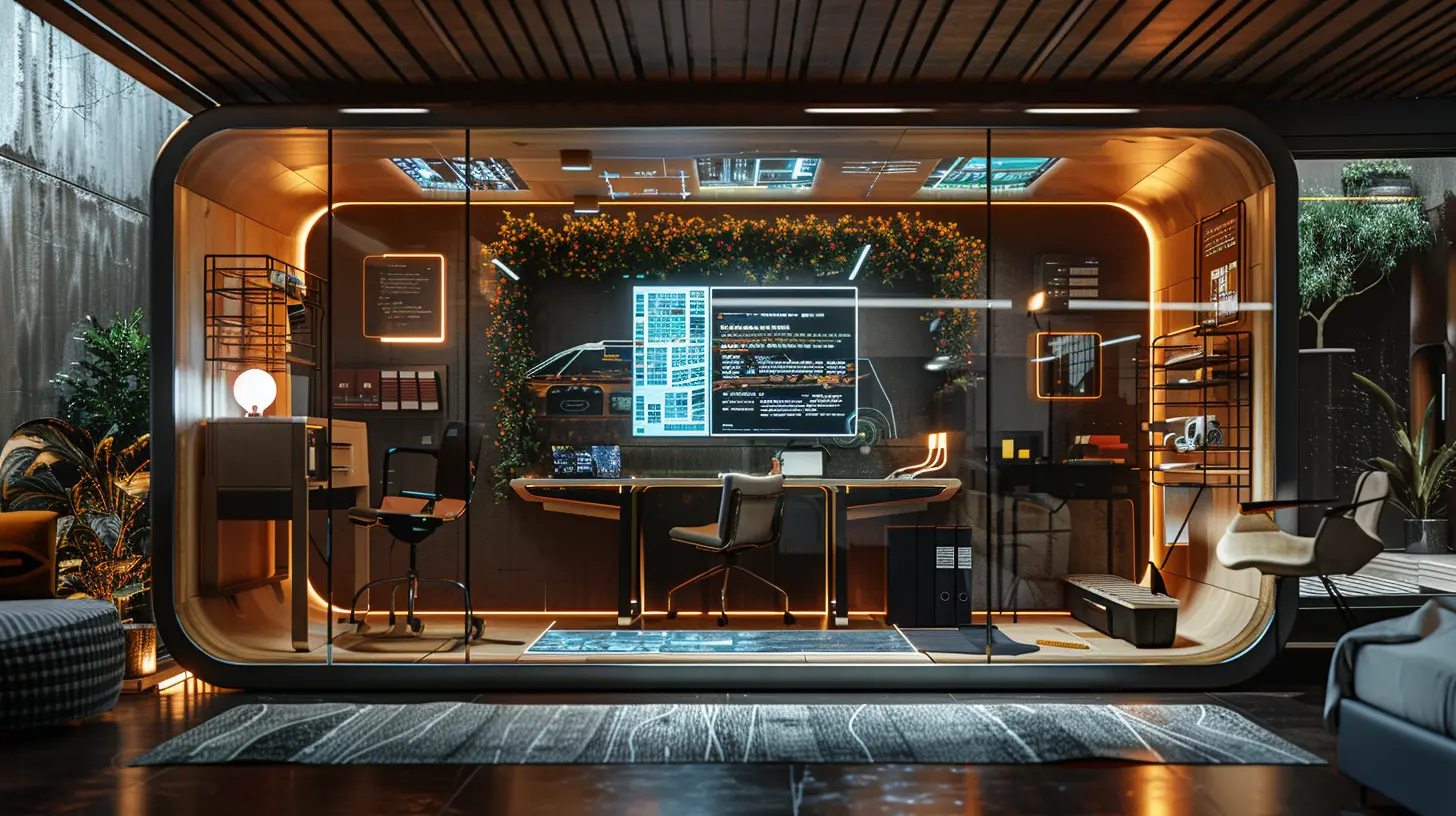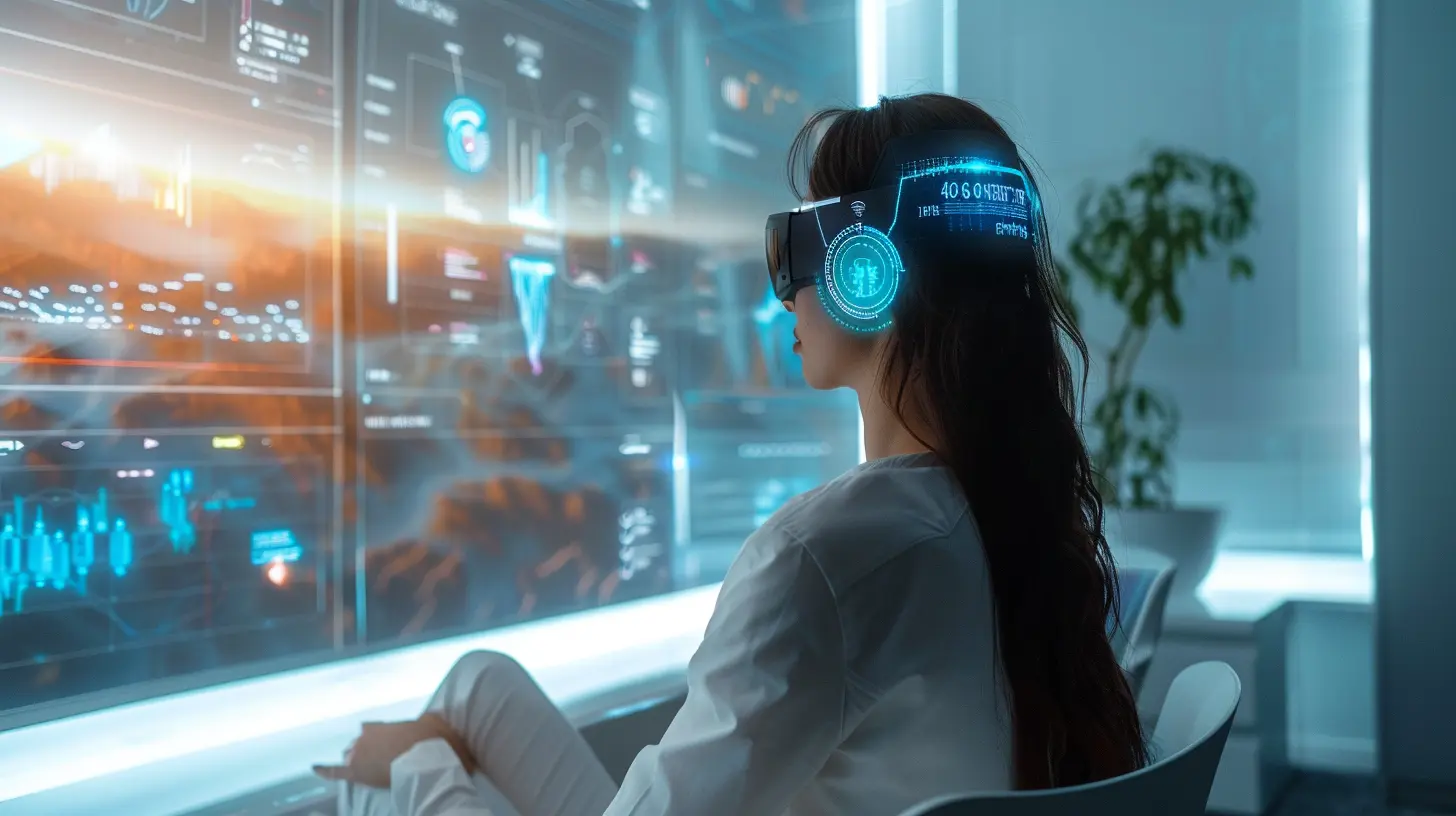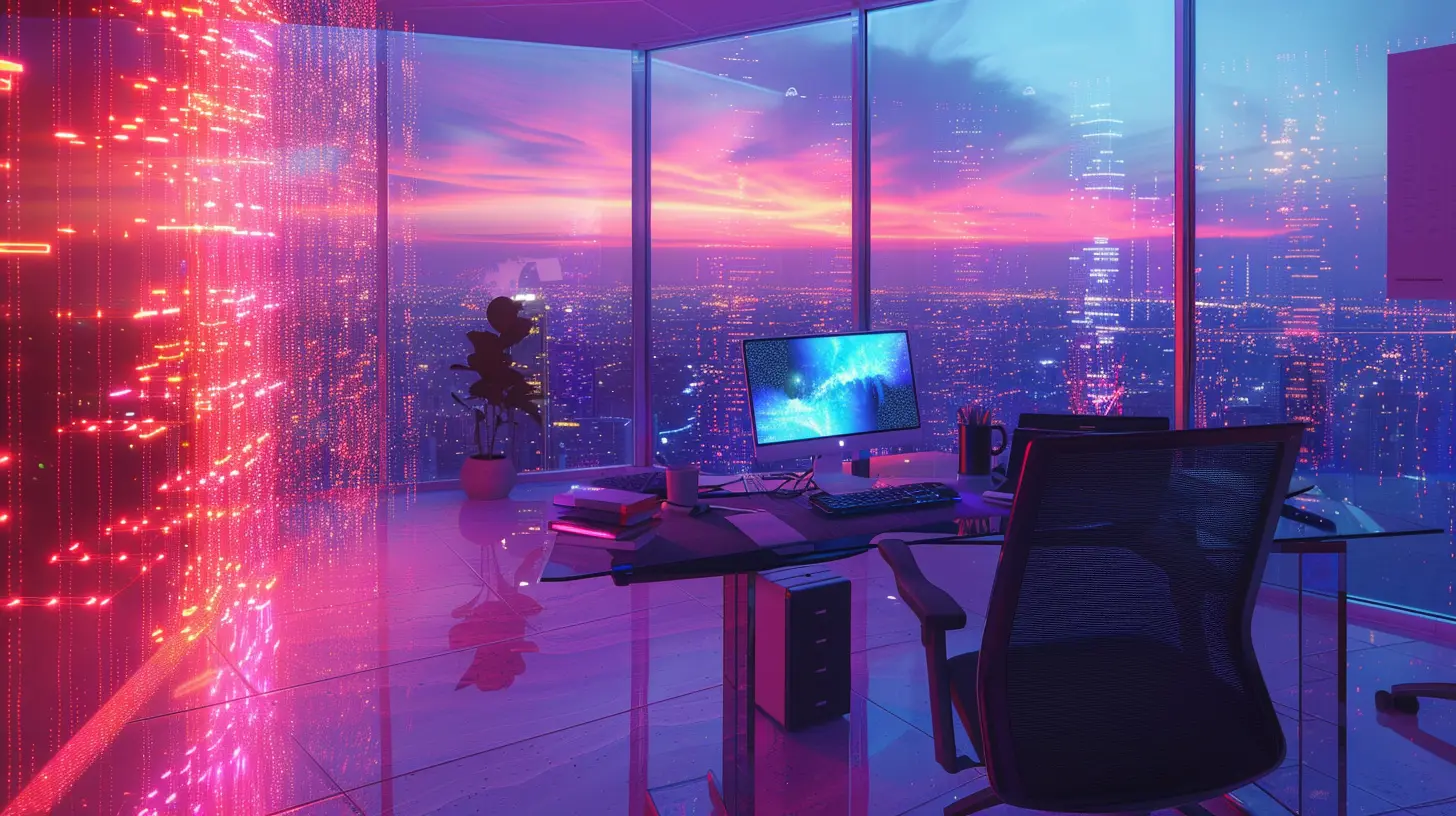The Future of Work: Remote Offices Powered by Holograms
27 November 2025
Imagine walking into your living room, putting on a lightweight headset, and instantly being transported into a bustling office space—complete with colleagues, whiteboards, and even the illusion of someone handing you your morning coffee. Sounds like science fiction, right? Well, not for long.
Welcome to the future of work: remote offices powered by holograms. This rapidly evolving tech trend is redefining how—and more importantly, where—we work. If you’ve been wondering what the next leap in remote collaboration looks like, buckle up, because we’re heading full throttle into a new dimension.

The Evolution of Remote Work
From Pajamas to Pixels
Not too long ago, working remotely was a rare perk. Then came the pandemic, and boom—we all became Zoom warriors practically overnight. But while video conferencing tools helped us stay connected, they also revealed some big limitations. Staring at flat screens for hours? Draining. Misreading tone and body language? Inevitable. Missing those spontaneous hallway convos? Absolutely.Enter: holographic technology. It's the next frontier in virtual presence. Instead of just talking into a webcam, imagine appearing as a 3D hologram in your coworker's virtual office—or having a life-sized teammate appear next to you at your home workspace.
Why Holograms Make Sense Now
Let’s be real—holograms have always sounded a bit gimmicky. Remember those awkward 3D concerts or the Tupac hologram at Coachella? Cool, but not exactly practical for everyday use.But thanks to major advances in augmented reality (AR), mixed reality (MR), and spatial computing, holography is finally finding its footing in the workplace. Companies like Microsoft (with HoloLens), Meta, and newer startups are pouring billions into spatial tech. As processors get faster and headsets get lighter (and cheaper), we're inching closer to a world where holographic communication is not just possible—it’s practical.

How Holographic Remote Offices Work
So, How Do Holograms Even Happen?
Okay, let's geek out for a sec.Holograms don’t just “appear” like magic. They're generated using a mix of depth-sensing cameras, real-time rendering, and spatial mapping. The hardware (typically a head-mounted display or AR glasses) projects a 3D image into your space, anchored in real physical dimensions.
With real-time capture technology, your avatar—or better, your holographic self—can reflect your gestures, facial expressions, and even eye contact. That means you can “sit” in a virtual meeting room, “walk” to your coworker’s desk, or “write” on a shared digital whiteboard as naturally as in a real office setting.
The Hardware Behind the Magic
While the idea sounds incredibly futuristic, the tech is catching up quickly. Here's what makes this vision feasible:- Head-Mounted Displays (HMDs): Devices like HoloLens 2, Magic Leap, and even Apple Vision Pro are bridging the gap between physical and digital.
- Volumetric Video Capture: Cameras capture people in 3D, enabling realistic holographic projections.
- Real-Time Rendering Engines: Platforms like Unity and Unreal Engine drive the creation of immersive, interactive environments.
- Cloud Computing & 5G: Fast networks and edge computing reduce latency, which is crucial for real-time interaction.
So yes, the tech stack is complex, but totally doable—and improving fast.

Benefits of Holographic Remote Offices
Making Remote Work Human Again
Let’s admit it: Remote work can be weirdly isolating. Video chats don’t quite capture the same vibe as being physically present in a room. But with holograms, we might just bring back that human connection.- Full-body non-verbal cues: From nods to posture shifts, subtle body language is back in the mix—making communication clearer and more natural.
- Shared context: When everyone "sits" in the same virtual space, discussions flow better. You can point at things, brainstorm on virtual sticky notes, or gesture to emphasize points.
- Reduced fatigue: Unlike flat screens, spatial environments engage multiple senses, reducing the dreaded Zoom fatigue.
Breaking Down Geographic Barriers
One of the biggest promises of remote work was “work from anywhere.” But holograms take this to the next level. Forget time zones and expensive travel. Need to collaborate with a design team in Germany and a dev squad in Bangalore? Just hop into your shared virtual space.You’ll feel like you’re at the same desk, even if you’re oceans apart. This unlocks insane productivity and talent potential—and it’s eco-friendly too.
Flexibility + Presence = Productivity
Here’s the sweet spot: remote work gave us flexibility, but often at the cost of presence and engagement. Holographic offices aim to offer both.You get to work from home (or anywhere), but still have face-to-face interaction, watercooler convos, and all those “Hey, quick question” moments that make offices tick.
This balance can supercharge team cohesion and creativity without chaining anyone to a physical desk.

Real-World Applications Already in Play
Business Meetings with a Sci-Fi Twist
Companies like Accenture and PwC are already using virtual meeting spaces with holographic avatars for client presentations and strategy sessions. These are high-stakes, high-impact moments—exactly where presence matters most.Imagine sitting across from a client as your team’s holograms present a pitch, complete with 3D models you can spin and zoom into. Way more engaging than a boring slide deck, right?
Training and Onboarding
For industries like healthcare, engineering, or manufacturing, training often requires hands-on guidance. Holographic modules can simulate real-world environments and tools, allowing new hires to practice in immersive scenarios with virtual supervision.Besides saving costs, it also scales easily and keeps learners engaged.
Virtual Workspaces: Not Just for Meetings
Looking at platforms like "Meta Horizon Workrooms" or "Spatial.io," we see virtual offices becoming more than meeting rooms. They’re evolving into daily work hubs. People “go to the office” by logging into a shared holographic space where they can brainstorm, chat, and even sketch ideas on a 3D whiteboard.Challenges to Holographic Workspaces
Alright, before you toss your office chair and go full Ready Player One, let’s talk roadblocks.Tech Accessibility
High-end headsets aren’t exactly cheap. While prices are coming down, we're not at mainstream affordability just yet. Plus, high-speed internet is still a luxury in many parts of the world.Privacy and Security
More data = more risks. Holographic systems track facial expressions, gestures, and real-time audio. That’s a treasure trove of personal info. With great innovation comes great responsibility—so any implementation must prioritize user privacy.Motion Sickness & Fatigue
Not everyone’s built for constant immersion. Prolonged use of VR or AR gear can lead to discomfort or motion sickness. Designers need to ensure that virtual spaces are ergonomic and user-friendly.Culture and Adoption
Let’s face it—some folks just like their traditional routines. Getting an entire workforce onboard with new tech isn’t easy. It requires training, open-minded leadership, and maybe even a few nudges toward the metaverse.
What the Future Holds
We're still in the early innings of holographic workspaces—but things are moving fast.In the next 5 to 10 years, we could see:
- Affordable, lightweight AR glasses replacing bulky headsets.
- AI-powered avatars that can attend meetings for you.
- Fully immersive virtual campuses for companies, complete with lounges, auditoriums, and break rooms.
- Seamless integration with existing tools like Slack, Notion, and Asana.
- Environmental simulations, where teams can collaborate inside a digital prototype, walk through 3D buildings, or test products together.
And who knows? Maybe we’ll ditch those “You’re on mute” moments for good.
So, Is This the Future of Work?
Look, change is never easy. But just like the shift from typewriters to computers, or landlines to smartphones, holographic workspaces feel like the natural next step for how we collaborate.They’re not about replacing human connection—they’re about enhancing it. If done well, they can bring depth, spontaneity, and connection back to remote work. It’s no longer about choosing between "remote" and "in-person." It’s about leveling up to something better altogether.
The future of work isn’t just remote. It’s spatial, immersive, and interconnected. And it might just be holographic.
So next time you're in a virtual meeting, don’t be surprised if your coworker turns to you and asks, “Pass the virtual donuts?”
Because the future is here—and it's 3D.
all images in this post were generated using AI tools
Category:
Future TechAuthor:

Reese McQuillan

